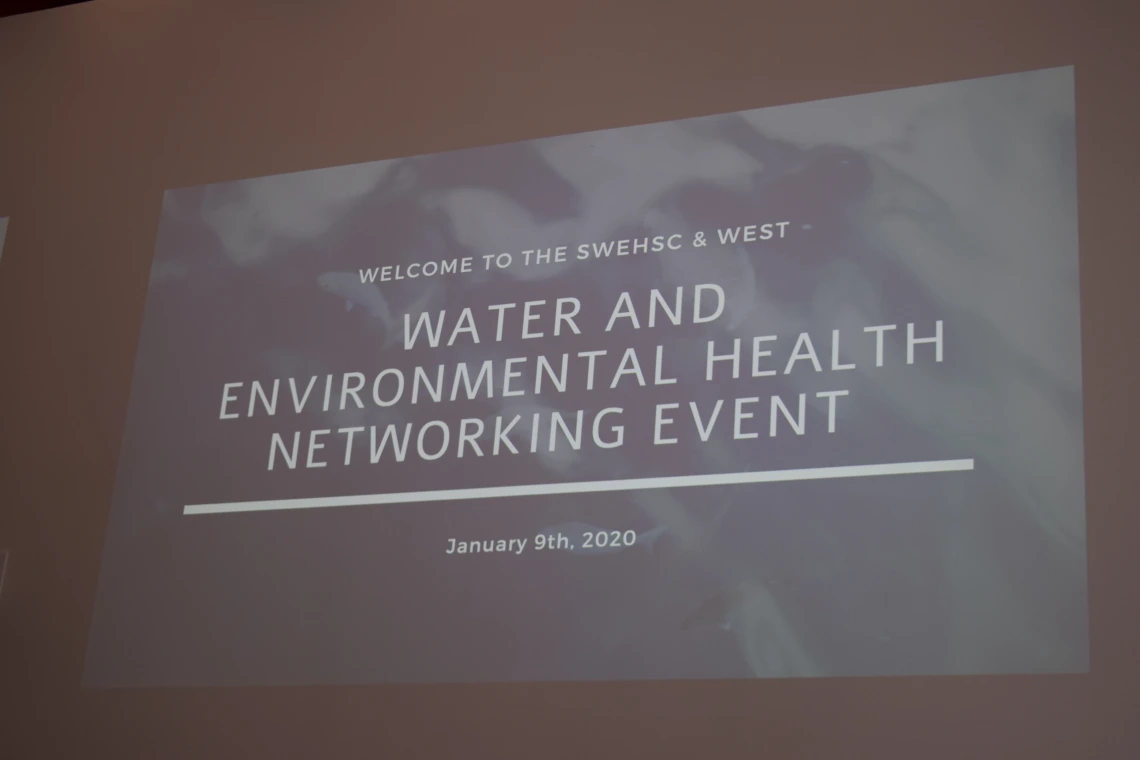SWEHSC partners with WEST to host 1st annual Water & Environmental Health Networking Event

Representatives from the Southwest Environmental Health Sciences Center (SWEHSC) along with members of the Water & Energy Sustainable Technology (WEST) Center hosted the 1st annual Water & Environmental Health Networking Event on January 9th.
The event showcased current and emerging research topics related to water and environmental health. In addition to featuring a student poster competition and research presentations, ample time was dedicated to allow for socialization and networking among the attendees with the goal of increasing cross-center environmental collaborations between University of Arizona researchers and the Tucson community, and providing students with access to faculty and potential recruitment opportunities.
“The goal of this event is to create new collaborations – to get creative about who you collaborate with and try to find connections in places you might not have looked before,” said Ben Richmond, MPH, Assistant Director of SWEHSC’s Community Engagement Core. “It’s important because by mixing people who don’t think they have a lot in common, you create new ideas that can be great and innovative.”
“There are water availability issues facing our local and tribal communities in Arizona that are going to require novel solutions,” shared Marti Lindsey, PhD, Director of SWEHSC’s Community Engagement Core. “This event is all about bringing researchers one step closer to finding those solutions”
SWEHSC is a National Institute of Environmental Health Sciences (NIEHS) funded center based out of the University of Arizona College of Pharmacy. They function as a collaborative and interdisciplinary research center which investigates the health effects of environmental agents, promotes environmental health science literacy, and serves as a non-biased source of scientific information to the public on environmental health educational issues.
The WEST Center is the University’s leading facility in the development of new technologies that deal with water scarcity and reuse. The two centers share a common mission to educate community members on the impacts to their environment and create sustainable solutions to alleviate environmental stressors.

